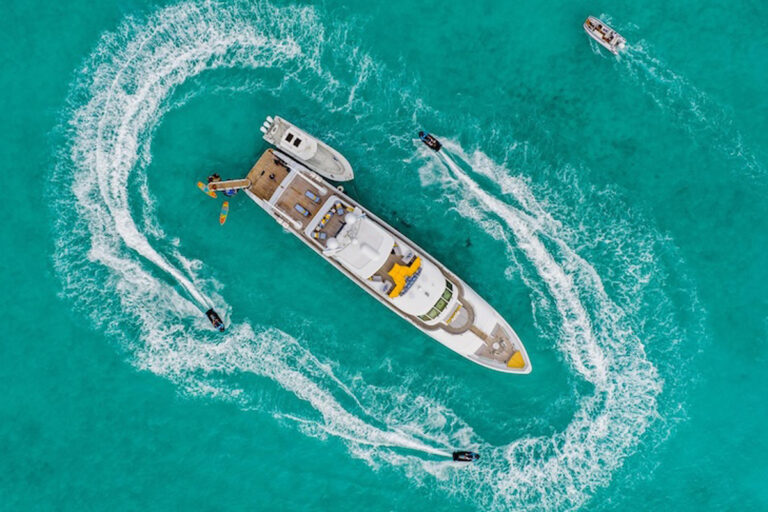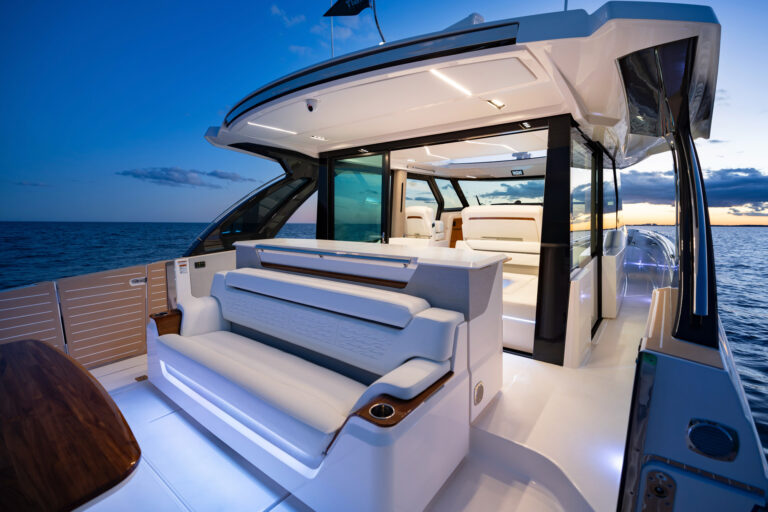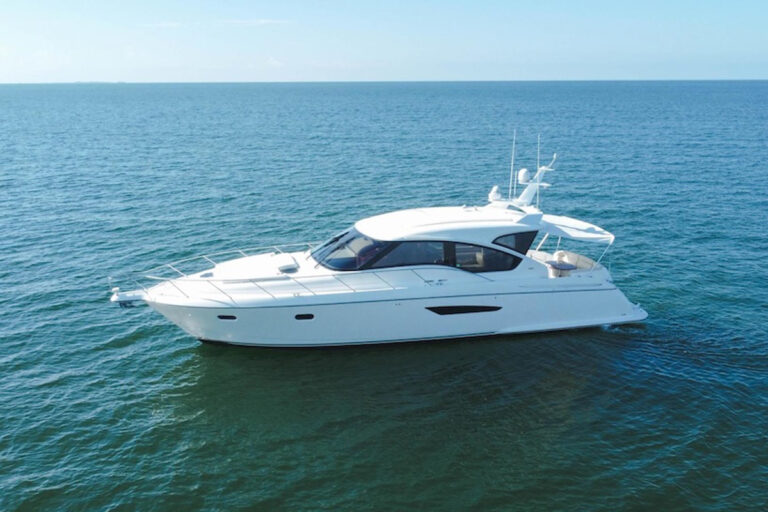Three seems to be the dominant number in environmental circles. We’re all familiar with the three green arrows that form the closed loop of the recycling logo. There is also the three-word slogan, “Reduce, reuse, recycle.” Going green at sea is also a three-part process, depending on environmental awareness in the design, the construction, and the operation of yachts.
Bruce Johnson, president of design firm Sparkman & Stephens, urges a cradle-to-grave concept. “The greenest boat you can build is a wooden sailboat,” he says, and then adds, “or maybe aluminum.” Not everyone wants a sailboat, though, and Johnson is a realist. “Green had digressed into something less green,” he continues, due both to costs and the availability of earth-friendly materials, but he says that’s no reason not to do what we can. As examples, he suggests the blending of biodiesel and waste lube oil into fuel oil so it can be burned in the engines, the installation of LED lighting and Energy Star appliances to reduce electrical loads, the treatment of gray water for such uses as deck washdown, and the specification of sustainable or dead-fall timber for wood construction and interior joinery. Johnson is also looking at a new dark-blue hull coating that reduces heat absorption, significantly diminishing air conditioning requirements.
Ward Setzer, who focuses on motoryachts rather than sailing machines at Setzer Design, adds a few more ideas. The central question for his designers, he says, is “How green can we go with it?” No boat, particularly a motoryacht, will ever be considered completely green, but, says Setzer, “It’s merely designing responsibly—the correct speed, the correct hull form, and aerodynamically efficient, too.” He specifies renewable or recycled materials wherever possible, including woods certified as sustainable, but acknowledges that such an approach reduces the selection of material available to an owner or his decorator. Some choices, such as using wool in place of synthetic carpet or fabrics, or using water-based finishes instead of petroleum-based, are easy and do not add to the cost, but others are not. Controllable- pitch propellers would be suitable for many yachts, he suggests, but there is an added cost in both construction and maintenance. The use of more exotic items such as large solar panel arrays for electrical generation, and sky sails or wingand- wing sails on a foremast for long downwind passages, are concepts Setzer has explored on a speculative basis, but none of his clients have yet been willing to incorporate them.
The second leg of the environmental tripod is the construction, where fabrication methods can have a significant impact. Johnson tries to design S&S’s wooden yachts so frames can be laminated directly, without the need for building jigs or molds. Likewise, aluminum fabricators can nest parts before cutting, reducing the amount of metal scrap to be recycled. Even composite construction has been cleaned up in recent years, with vacuum bagging and other closed molding methods being implemented to reduce air pollution, and the use of prepreg laminates in place of wet layup, to reduce the amount of waste materials going to the landfill. One builder has even committed to full construction with soybean- and corn-based resins.
The third leg is the operation of the yacht. While the designer and builder can do a lot to promote cleaner and more efficient operation, the ultimate responsibility for this rests with the owner. The first and easiest step? Slow down. Owners should also keep their engines, props, and running gear in top condition for propulsive efficiency, clean the hull often to reduce drag (using earth-friendly products), and leave any unnecessary gear ashore to reduce weight. Recycle what you can (including monofilament fishing line) and stow the rest of your trash for proper disposal ashore. Be careful to prevent fuel spillage in harbor and unintentional discharges at sea. Before leaving port, plan your course not only to save fuel, but also to avoid running or anchoring where you might damage sensitive seabed habitats.
Designers and builders are doing their part for the environment.









